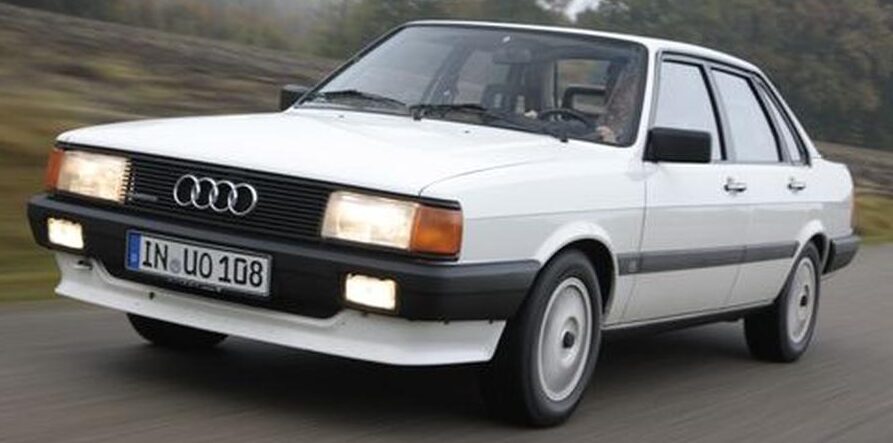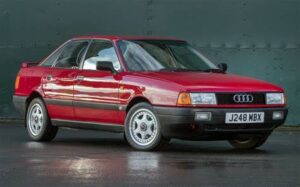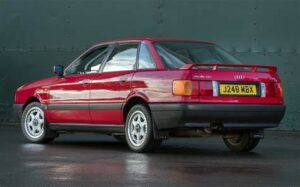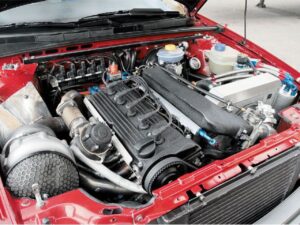Audi 80 buyers guide
4. Years and models of Audi 80
Audi 80 buyers guide. The Audi 80 is a compact executive car that was initially introduced in 1966 as a successor to the Audi F103 series. Designed and manufactured by the German automaker Audi, the Audi 80 played a significant role in Audi’s lineup for several decades. Over its production lifespan, which spanned multiple generations, the Audi 80 became known for its blend of luxury, performance, and technological innovation.
The first generation, known as the B1 series, was launched in 1972 and marked Audi’s entry into the compact executive car segment. Subsequent generations, including the B2, B3, and B4, brought advancements in design, safety features, and engine technology. The Audi 80 was appreciated for its comfortable interior, driving dynamics, and overall build quality.
Throughout its history, the Audi 80 underwent various facelifts and updates to stay competitive in the ever-evolving automotive market. The model eventually paved the way for the Audi A4, which succeeded the Audi 80 in the mid-1990s. The Audi 80’s legacy lives on in the continued success of the A4 series and Audi’s commitment to producing high-quality vehicles.
Here’s the list of main Audi 80 models organized by generation:
Audi 80 B1 (Type 80/82) – 1972–1978:
Audi 80 (1972–1976)
Audi 80 Variant (1972–1978)
Audi 80 B2 (Type 81/85) – 1978–1986:
Audi 80 (1978–1986)
Audi 80 Avant (1978–1986)
Audi 80 GT (1978–1983)
Audi 80 GL (1981–1986)
Audi 80 B3 (Type 89) – 1986–1991:
Audi 80 (1986–1991)
Audi 80 Avant (1986–1991)
Audi 80 Quattro (1986–1991)
Audi 80 Quattro Sport (1987–1989)
Audi 80 B4 (Type 8C) – 1991–1996:
Audi 80 (1991–1995)
Audi 80 Avant (1991–1996)
Audi 80 Quattro (1992–1995)
Audi 80 Cabriolet (1991–2000)
Audi, as a brand, has undergone various changes and introduced new models over the years. The car was produced until 1995, and its most spectacular version was the S2 (first 220, later 230 HP). The 230-horsepower S2 accelerated from 0 to 100 km/h in 5.9 seconds. In total, approximately 68.4 thousand cars were produced. pieces Coupe. The Audi 80/90 was even more successful. By 1991, almost 1.429 million pieces of this series were produced.
The Audi 80 was succeeded by the Audi A4 in the mid-1990s, marking a transition in Audi’s model nomenclature. Information regarding Audi 80 production figures could be available in historical automotive literature, archives, or through Audi’s official channels.
Across its various generations, the Audi 80 model showcased a commitment to engineering innovation and adaptability. Here’s a more detailed breakdown of the engines available in different generations of the Audi 80:
- First Generation (B1, 1966–1978): The early Audi 80 models featured modest engines, including inline-four petrol engines with displacements ranging from 1.3 to 1.5 liters. These engines were known for their reliability and fuel efficiency, fitting the automotive landscape of the time.
- Second Generation (B2, 1978–1986): This era saw a continuation of inline-four petrol engines, but with expanded options and increased power. Diesel engines were also introduced, aligning with the growing interest in fuel-efficient alternatives. The Audi 80 B2 offered a variety of engines, including the notable 5-cylinder petrol engines.
- Third Generation (B3, 1986–1991): The Audi 80 B3 introduced more advanced engine technologies, such as fuel injection. Engine options included inline-four and V6 petrol engines, as well as turbocharged diesel engines, showcasing a balance between performance and fuel economy.
- Fourth Generation (B4, 1991–1996): The final generation of the Audi 80 featured a range of engines, including updated versions of the inline-four and V6 petrol engines. Some models even featured the innovative 2.8-liter V6 engine with 172 horsepower, demonstrating Audi’s commitment to performance.
Throughout its production run, the Audi 80 engines were known for their smooth performance and efficiency, contributing to the model’s popularity in various markets. It’s worth noting that specific engine options could vary based on the market and model year, emphasizing Audi’s adaptability to evolving automotive trends. For precise details on engines in specific Audi 80 models, consulting official Audi documents or automotive historians may provide comprehensive insights.
The Audi 80 was produced over several generations, each marked by various improvements and design changes. Here is a general overview of the years and models of the Audi 80:
- First Generation (B1, 1966–1978): The initial Audi 80 models were introduced in the late 1960s. These early models set the foundation for the Audi 80 line, featuring compact designs and inline-four engines.
- Second Generation (B2, 1978–1986): The second generation, introduced in the late 1970s, featured significant updates in design and technology. It included a variety of body styles such as sedan, coupe, and wagon. Notable versions included the Audi 80 Quattro, showcasing the brand’s commitment to all-wheel-drive technology.
- Third Generation (B3, 1986–1991): The B3 generation, launched in the mid-1980s, continued the evolution of the Audi 80. It introduced more aerodynamic designs and advancements in safety features. The availability of newer engine technologies and body styles, including the Audi 80 Avant (wagon), contributed to its popularity.
- Fourth Generation (B4, 1991–1996): The final generation of the Audi 80, the B4, saw further refinements in design and technology. It continued to offer a range of body styles, including sedan and Avant. The Audi 80 B4 also paved the way for the transition to the Audi A4 series.
Are you already a proud owner of a Audi 80? If so, check out our selection of parts for this car at the following link:
https://octoclassic.com/product-category/audi/80
Photos sources: carpixel.net, 1cars.org, ZEIT





